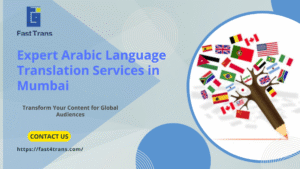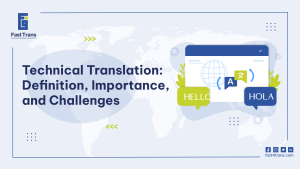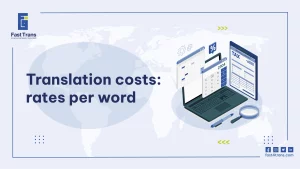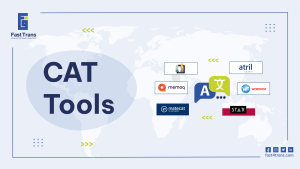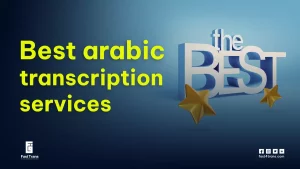According to Shopify’s 2023 e-commerce trends report, the e-commerce market grew by 13% in 2024, with a $4.84 billion revenue!
It’s expected to reach $5.42 billion by 2025. The most profitable e-commerce businesses being Fashion, food, and electronics.
Arabic eCommerce Translation Mistakes are often miss the mark by not fully localizing their content, neglecting cultural nuances, regional preferences, and SEO. To succeed, businesses must adapt product descriptions, payment methods, and visuals to local customs and dialects, while optimizing for Arabic search terms.
Relying on automation or overlooking regional differences can lead to poor user experience and lost sales. By tailoring the entire shopping journey, from language to payment, businesses can build trust, enhance engagement, and boost conversions in the MENA market.
Arabic eCommerce Translation Mistakes
Arabic eCommerce websites often fail to localize content, neglecting SEO, cultural context, regional preferences, and payment methods. This leads to poor user experience, reduced engagement, and missed sales opportunities.
1- Not considering a market’s cultural context
An Arabic e-commerce website aims to sell, but not catering to the cultural context can be a major mistake. Translation alone isn’t enough; the user experience should be enhanced through localization at every touchpoint. This includes adapting menus, product descriptions, product names, slogans, copy, and even product videos. Consider localizing images, units of measurement, date and time formats, currency, and brand names to better align with Arabic-speaking consumers.
You also need to ask:
- Is this product suitable for a broad age range within Arab cultures?
- Are the images appropriately localized for Arabic speakers?
Read more: Localizing your website: a step towards expanding your small business globally
2- Forgetting about SEO
Imagine running a physical store in the Arab world selling high-quality products from around the globe, but without any signs or directions. This is what happens when Arabic e-commerce websites neglect search engine optimization (SEO).
To be found by Arabic-speaking customers, your website needs to be optimized for relevant keywords that resonate with their search habits. This involves not just translating product descriptions but adapting them to common Arabic search terms, optimizing speed, URLs, meta descriptions, and tags to rank well in Arabic search engines.
Check out Neil Patel’s ultimate guide for more SEO traffic on your e-commerce site.
3- Cultural Insensitivity and Inappropriate Content
What’s appropriate or legal on an Arabic version of your website could be offensive or inappropriate in another Arabic-speaking country, all depending on the audience. Cultural sensitivity in the Arab world is critical; expressions, content, imagery, and even certain gestures may have different meanings.
Be especially cautious with religious symbols, images of animals, or content that may be viewed as disrespectful in some Arab cultures. Understanding your Arab customer base and conducting research about their cultural norms is key to ensuring that the content resonates positively.
4- Leaving regional differences as they are
Imagine an Arab user from Saudi Arabia visiting your Arabic e-commerce site, but the location is set to UAE, and you display measurements in inches and pounds, with prices in USD. Such regional mismatches create a poor user experience.
To avoid this, localize the website to show the correct currency, for example, Saudi Riyal, and use appropriate measurement units (centimeters, kilograms, etc.). Tailoring your content to suit local preferences is essential for increasing conversions in Arabic-speaking markets.
5- Relying on automation because it’s easier or cheaper
While free or paid machine translation tools may seem like an easy and cost-effective solution, they are not ideal for e-commerce website localization, especially for Arabic-speaking users. Machine translation may work for minor or straightforward text, but for context-specific content, like product descriptions or cultural references, manual translation by native Arabic speakers is necessary.
These tools often fail to capture nuances, which can result in confusion or even offend your Arabic audience.
Read more: Best Free Translation Websites
6- Multilingual customer service and support
Not all non-native English speakers can effectively navigate Help Center articles, FAQs, or customer chatbots. Providing Arabic-speaking customer support is essential, especially in the Arab world where customer service is a crucial part of the e-commerce experience. Offering local phone numbers, a customer service team available in the local timezone, and multilingual capabilities will enhance customer satisfaction.
Additionally, ensuring that the Help Center and chatbot services are localized for Arabic speakers can significantly improve customer experience.
7- Not considering regional language differences
Even within the Arab world, there are subtle regional language differences that can impact the customer experience. While Modern Standard Arabic (MSA) is used widely, certain phrases or vocabulary might be more commonly understood in some regions than others.
For instance, the word “jumper” in English may need to be localized differently for the Gulf region compared to Egypt. It’s crucial to consider these dialects and regional preferences when translating, especially if you want your products to feel truly local.
8- Overlooking Payment Preferences
In the Arab world, payment preferences vary greatly from country to country. While customers in some regions might prefer paying with credit cards, others may prefer mobile wallets or even cash on delivery. The failure to offer payment methods suited to Arab consumers can result in abandoned carts and lost sales.
Research the most common payment methods used in each Arabic-speaking region you’re targeting, and make sure to provide local payment solutions that align with these preferences.
Read more about: Arabic eCommerce Localization: Invade the Gulf Region
Why are Arabic e-commerce translation services important?
Arabic e-commerce translation services are crucial for expanding reach in the MENA region by adapting content to local language, culture, and SEO practices. This enhances user experience, builds trust, and ensures legal compliance, ultimately boosting sales and conversions.
1. Expanding Market Reach
The Middle East and North Africa (MENA) region is home to a rapidly growing digital economy, with an increasing number of internet users. According to recent statistics, internet penetration in the Arab world is at an all-time high, making it a prime market for e-commerce businesses. Offering your website or online store in Arabic opens the door to a massive audience, many of whom may not be fluent in English or other common languages used online. Translation allows businesses to tap into this market and build trust with local consumers.
2. Building Trust and Credibility
For many Arabic-speaking consumers, shopping in their native language feels more secure and familiar. When they can navigate a website, read product descriptions, and understand payment processes in Arabic, it creates a sense of comfort and reliability. High-quality translation services ensure that the message is clear and culturally relevant, demonstrating that your business respects the local language and traditions. This helps in building trust, which is crucial for customer retention in the competitive e-commerce landscape.
3. Cultural Sensitivity and Localization
Arabic-speaking regions are diverse, with varying dialects and cultural norms. E-commerce translation isn’t just about translating text; it’s about localization—adapting content to fit the preferences and values of the target audience. An accurate translation considers cultural sensitivities, avoiding misinterpretations or offense that can harm your brand image. For example, symbols, colors, and even images may carry different meanings across cultures. A professional Arabic e-commerce translation service understands these subtleties and ensures your content resonates with the local audience.
4. Enhancing User Experience
A seamless and intuitive user experience (UX) is paramount for any e-commerce business. Arabic, as a right-to-left language, requires special formatting, such as mirrored layouts and specific text alignments. Professional translators ensure that the Arabic version of your website not only reads well but is also properly formatted for an optimal user experience. This attention to detail helps consumers easily browse, search, and complete transactions without confusion, leading to higher conversion rates.
5. SEO Optimization for Arabic-Speaking Markets
Translation services for e-commerce also involve optimizing your content for search engines in the Arabic language. Arabic speakers often use local terms, colloquialisms, and keywords when searching online. Professional translators will ensure that your content is not only accurate but also optimized for search engine visibility in Arabic. This increases your chances of being discovered by potential customers in the region.
6. Legal and Regulatory Compliance
Every market has its own legal and regulatory requirements. When operating in Arabic-speaking countries, businesses must ensure that their content complies with local laws, particularly when it comes to advertising, data protection, and e-commerce practices. A professional Arabic translation service is aware of these regulations and ensures that the translated content adheres to them, minimizing legal risks and ensuring your business is operating ethically and responsibly.
7. Boosting Sales and Conversions
Ultimately, the goal of any e-commerce platform is to drive sales and conversions. Arabic e-commerce translation services help create an experience that aligns with the expectations of local consumers, making it easier for them to trust and purchase from your platform. When customers feel that a website is tailored for them, they’re more likely to complete a purchase, return for future shopping, and recommend the site to others. Translation can, therefore, have a direct impact on your bottom line.
Fast Trans is your go-to company when it comes to E-commerce translation
Looking for someone to handle the entire translation of your e-commerce website without having to worry about any of the above?
You’ve landed in the right place.
At Fast Trans, we take pride in going all in with our clients. We understand the competitive landscape of e-commerce and have worked with plenty of customers, who just like you, want to join the crowd and soar above.
Get in touch with our team here, or get a quick quote here.
Feel free to check our plenty of other services. We basically have:
- High client retention rate, compromising lots of industries
- In-house, outsourced, and freelance team members who are always ready to deliver top-quality
- 120+ Language support
- Comprehensive utilization of Translation Software
- Proud array of translation, localization, and content services that you can check here
- ISO Certifications
Did we miss anything?
Conclusion
Arabic eCommerce websites often overlook crucial aspects such as cultural context and regional preferences, which significantly impact user experience and engagement. Content should be localized, not just translated, to resonate with Arabic-speaking audiences. This includes tailoring product descriptions, images, and payment methods to align with cultural norms and regional differences, ensuring the content feels native. Furthermore, eCommerce platforms must optimize for SEO by using relevant Arabic keywords and search terms to increase visibility and attract local customers effectively.
Additionally, common Arabic eCommerce Translation Mistakes like ignoring regional language variations, relying on automated translation tools, or not providing local customer support can alienate potential buyers. Understanding the diverse cultural and linguistic landscape of the Arab world is vital for businesses aiming to succeed in the MENA region. Localizing payment options, ensuring culturally sensitive content, and offering a seamless user experience are key to boosting sales and building trust with Arabic-speaking consumers.


